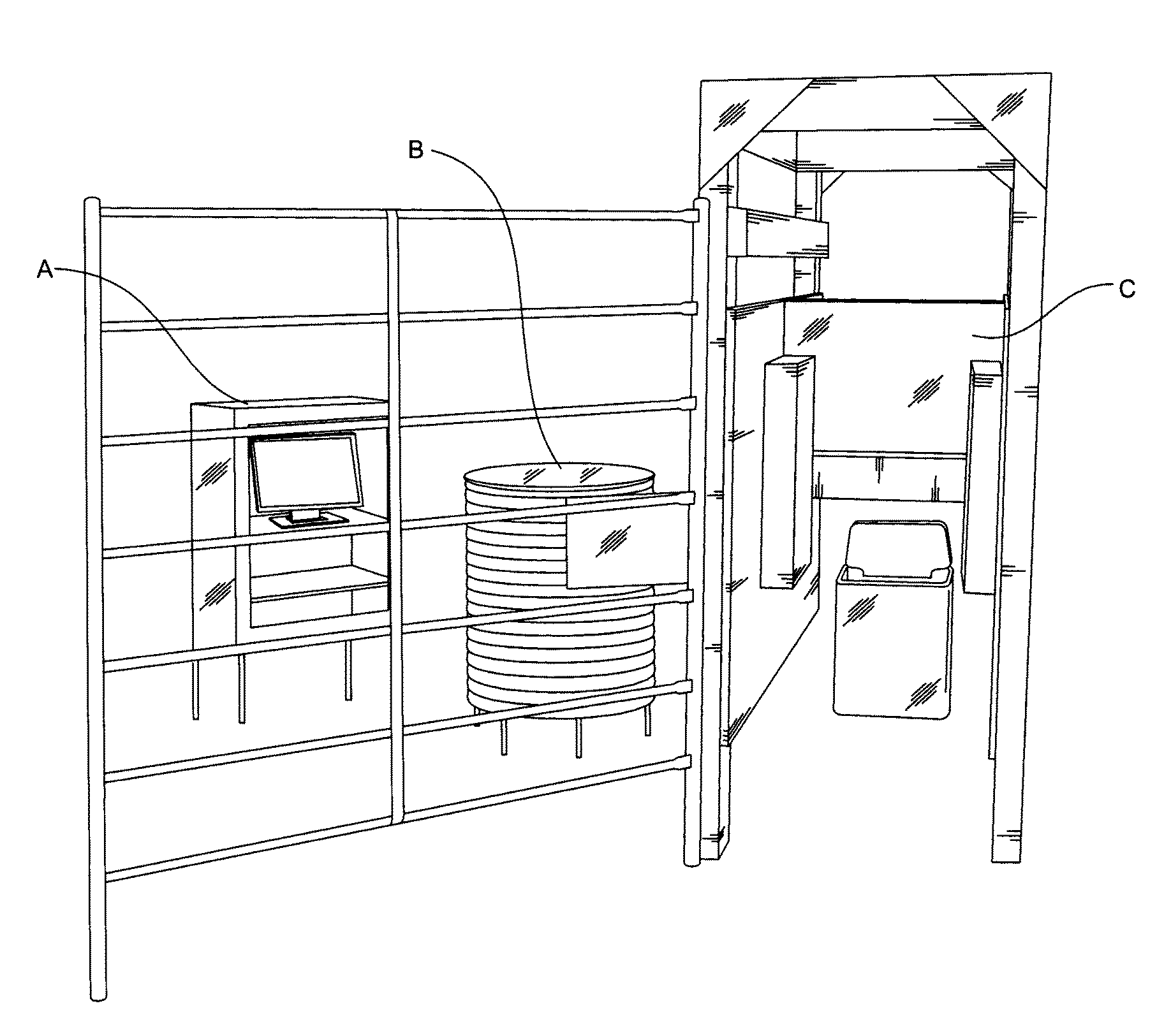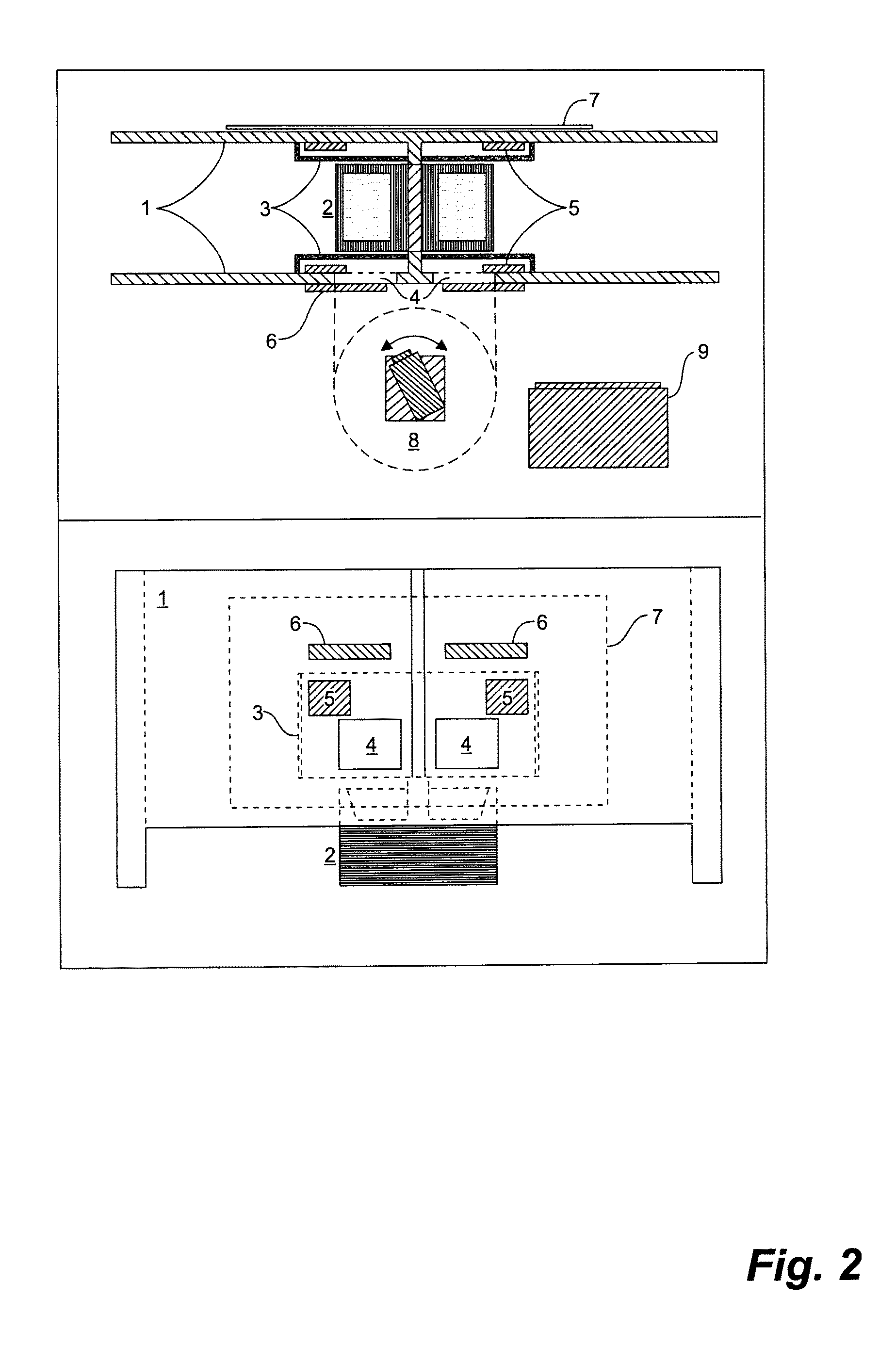Apparatus and method for using infrared thermography and behaviour information for identification of biologically important states in animals
a technology of infrared thermography and animal body, applied in the field of non-invasive apparatus and method of identifying biologically important states in animals, can solve the problems of long feed monitoring period, high cost and impracticality, and difficulty in measuring growth efficiency, so as to determine the health, growth or reproductive state of the animal
- Summary
- Abstract
- Description
- Claims
- Application Information
AI Technical Summary
Benefits of technology
Problems solved by technology
Method used
Image
Examples
example 1
Animals
[0046]In this example, forty (40) multiple sourced, co-mingled and transported commercial, auctioned receiver calves, which had been exposed to viral and bacterial infection for respiratory viruses including BVD, PI3, IBR, Corona and BRSV, and forty (40) retained possession calves were used. The calves were weighed, monitored for core and orbital thermal properties, blood sampled and placed onto conventional cereal grain silage with access to shelter and clean water.
[0047]Twenty (20) of these calves were obtained from the BVD and IBR antibody free herd at the Animal Diseases Research Institute at Lethbridge, Alberta, Canada. These calves were Angus×Hereford crosses and had been weaned approximately one week prior to transport to Lacombe, Alberta, Canada. The calves were an average of 550 lbs, were raised on native grass pasture and had been given a de-worming medication two weeks prior to weaning.
[0048]The calves were transported on a conventional disinfected horse trailer. O...
example 2
Animals
[0060]In this example, further trials were conducted on 100 multiple sourced, co-mingled, transported and weaned commercial calves. These calves were procured from two primary sources with 17 from the ADRI herd at Lethbridge, Alberta, Canada and 83 procured from commercial auction facilities. These calves were themselves purchased through auction from two separate locations. The calves were brought to the Lacombe Research Centre (LRC) Beef Research unit, weighed, blood sampled, core temperatures recorded and then placed into clean receiver pens with wood shavings bedding and free access to water and cereal grain silage.
Methods
[0061]Continuous, automatic infrared and behavioural data was captured on all animals for a three-week period (except when power supply or solar loading glitches caused a failure in the system), as described in Example 1.
Results
[0062]In the present example, thirty seven animals were identified as “at risk” of BRD by the “pen checking” technique. Of these...
example 3
Animals
[0065]In the present Example 3, investigations were carried out on a total of sixty-five (65) receiver calves. These calves consisted of 54 retained possession, low disease incidence animals from the Lacombe Research Centre (LRC) Beef Research fall calving herd and a further eleven (11) calves from the high-health, closed herd located at the Animal Disease Research Institute (ADRI) at Lethbridge, Alberta, Canada. The ADRI calves were unique in that they displayed no antibodies to either BVD or IBR virus and therefore would be susceptible to BRD-causing viruses. Calves from both herds were commercial crossbred cattle of British×Continental breed. All calves had been weaned and transported to the LRC beef unit prior to the study. The animals averaged 220 kg at the start of the study.
Methods
[0066]To simulate typical marketing conditions all calves were co-mingled and transported to a local auction facility within one hour of the LRC beef unit. The calves were then offloaded and ...
PUM
 Login to View More
Login to View More Abstract
Description
Claims
Application Information
 Login to View More
Login to View More - Generate Ideas
- Intellectual Property
- Life Sciences
- Materials
- Tech Scout
- Unparalleled Data Quality
- Higher Quality Content
- 60% Fewer Hallucinations
Browse by: Latest US Patents, China's latest patents, Technical Efficacy Thesaurus, Application Domain, Technology Topic, Popular Technical Reports.
© 2025 PatSnap. All rights reserved.Legal|Privacy policy|Modern Slavery Act Transparency Statement|Sitemap|About US| Contact US: help@patsnap.com



